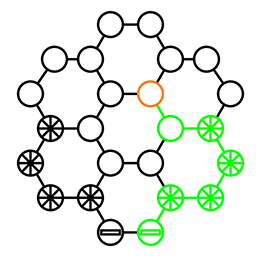An EPFL MT-BA2 C++ programming project
Due to a sharp increase in sea levels, a city state wishes to transform into a floating city, consisting of floating districts and sky bridges. This tool assists the city design process, providing useful global statistics and an extensible model for simulation.
This is a C++11 programming module based around the GTKmm framework's event loop.
- g++
- make
- GTKmm

The archipelago graphical user interface
To get a local copy up and running follow these simple steps. We recommend Ubuntu, although this software should work on any GTK supported platform (in theory).
You will need
- g++
- make
- GTKmm 3
sudo apt update
sudo apt install g++ make libgtkmm-3.0-dev- Clone the archipelago repository
git clone https://github.com/MarcusCemes/archipelago.git- Build using the Makefile
makeThis will produce an archipelago executable under the dist folder. If you wish to run the software on another system apart from the one you used to build the software, you may need to install the lighter end-user GTKmm library (the dev version above is sufficient).
sudo apt update
sudo apt install libgtkmm-3.0-1v5The program may either be run directly or using the command line. An additional path may be specified to immediately attempt to load that saved town.
dist/archipelago test/tests/g01.txtThe interface provides graphical tools to interact with the town. There are three different node types, housing, transport and production, connecting together by links.
Nodes may be selected/deselected. With no nodes selected, clicking on empty space will create a new node, clicking again on a selected node will remove it, right clicking somewhere with a node selected will move that node, and click-and-dragging outside of a selected node will modify it's capacity (resize). To create a link, active the Edit link button, select a node, and then select another node.
A link connection between two transport nodes has a faster transit speed. Production nodes may not be traversed to gain access to other nodes. By activating the Shortest path option, a green path will be highlighted showing the optimal route from a selected housing node to the closest production node and to the closest transport node. This feature implements a modified implementation of Dijkstra's algorithm.
To assist with city evaluation, three town criteria are calculated:
- ENJ (Equilibre Nuit-Jour): The balance between housing capacity and production capacity
- CI (Coût de l'Infrastructure): The estimated cost of the city
- MTA (Meilleur Temps d'Accèss): The average travel time for any housing node the closest production node
The town may be loaded from and saved to files using a unique file format. Calculations are done using double-precision floating point numbers.
The application is split into an MVC-style (Model-View-Controller) architecture. The model is independent of GTKmm.
- Controller: The GUI module
- View: The Graphics module
- Model: The Town and Node modules
Distributed under the MIT License. See LICENSE for more information.
The Archipelago project concept is copyright © Ronin Boulic & collaborators.
